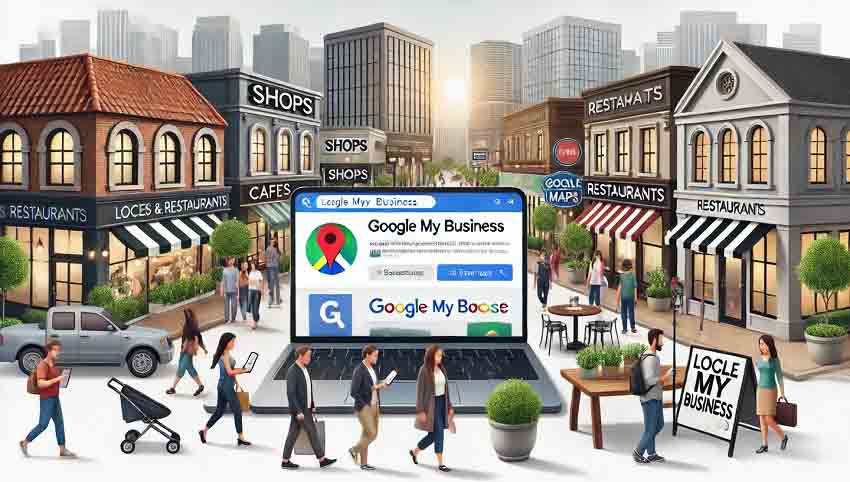Local SEO is a crucial aspect of digital marketing for businesses aiming to attract customers from a specific geographic area. Google My Business (GMB) is an essential tool that helps businesses manage their online presence across Google, including Search and Maps. This article will provide an in-depth understanding of Local SEO and GMB, including their benefits, how to implement them effectively, and real-world examples.
Table of Contents
- Understanding Local SEO
- What is Local SEO?
- Importance of Local SEO
- Introduction to Google My Business
- What is Google My Business?
- Key Features of GMB
- Benefits of Local SEO and GMB
- Increased Visibility
- Enhanced Credibility
- Improved Customer Engagement
- How to Implement Local SEO
- Keyword Research for Local SEO
- On-Page SEO for Local Optimization
- Building Local Citations and Backlinks
- Setting Up and Optimizing Google My Business
- Creating and Claiming Your GMB Listing
- Optimizing Your GMB Profile
- Managing Reviews and Ratings
- Advanced Strategies for Local SEO and GMB
- Utilizing Google Posts
- Leveraging Local SEO Tools
- Tracking and Analyzing Performance
- Case Studies and Real-World Examples
- Successful Local SEO Campaigns
- Impact of GMB Optimization on Local Businesses
- Common Challenges and How to Overcome Them
- Dealing with Negative Reviews
- Handling Duplicate Listings
- Future Trends in Local SEO and GMB
- Voice Search and Local SEO
- The Role of AI in Local SEO
- Conclusion
1. Understanding Local SEO
What is Local SEO?
Local SEO (Search Engine Optimization) focuses on optimizing a business’s online presence to attract more customers from relevant local searches. These searches can occur on various search engines but often focus on Google, given its dominant market share.
Importance of Local SEO
Local SEO is vital for businesses that operate on a regional level, as it helps them appear in local search results. This increased visibility can drive more traffic to their website and physical store locations, leading to higher sales and revenue.
2. Introduction to Google My Business
What is Google My Business?
Google My Business is a free tool that allows businesses to manage their online presence across Google, including Search and Maps. By verifying and editing their business information, owners can help customers find them and learn more about their offerings.
Key Features of GMB
- Business Information Management: Control over your business name, address, phone number, website, and hours of operation.
- Customer Interaction: Ability to read and respond to reviews, post updates, and engage with customers.
- Insights: Access to valuable analytics about how customers search for and interact with your business online.
3. Benefits of Local SEO and GMB
Increased Visibility
By optimizing your business for local searches and maintaining an up-to-date GMB profile, you can appear in local pack results, maps, and organic search results, making it easier for potential customers to find you.
Enhanced Credibility
Having a well-maintained GMB profile with accurate information, positive reviews, and regular updates can enhance your business’s credibility and trustworthiness in the eyes of potential customers.
Improved Customer Engagement
GMB allows businesses to engage with customers through reviews, questions and answers, and direct messages. This interaction can lead to increased customer satisfaction and loyalty.
4. How to Implement Local SEO
Keyword Research for Local SEO
Identifying the right keywords is the foundation of any SEO strategy. For local SEO, this involves finding keywords that include location-specific terms.
- Use Tools: Tools like Google Keyword Planner, Ahrefs, and Moz can help identify local keywords.
- Analyze Competitors: Look at what keywords your local competitors are targeting.
- Include Local Modifiers: Use keywords that include the city, neighborhood, or region (e.g., “best pizza in Brooklyn”).
On-Page SEO for Local Optimization
- Optimize Titles and Meta Descriptions: Include local keywords in your titles and meta descriptions.
- Create Local Content: Write blog posts or pages about local events, news, or activities related to your business.
- Add Location Pages: If you have multiple locations, create separate pages for each with unique content.
Building Local Citations and Backlinks
- Submit to Local Directories: Ensure your business is listed in local online directories like Yelp, TripAdvisor, and Yellow Pages.
- Get Local Backlinks: Reach out to local bloggers, news sites, and business partners to get backlinks.
- NAP Consistency: Ensure that your Name, Address, and Phone number (NAP) are consistent across all online platforms.
5. Setting Up and Optimizing Google My Business
Creating and Claiming Your GMB Listing
- Sign In to Google My Business: Go to the Google My Business website and sign in with your Google account.
- Enter Your Business Information: Fill out your business name, address, phone number, and category.
- Verify Your Business: Choose a verification method (postcard, phone, email) to confirm your business location.
Optimizing Your GMB Profile
- Complete All Information: Ensure your profile is complete with accurate business hours, services, and a detailed description.
- Add Photos: Upload high-quality photos of your business, products, and services.
- Use Google Posts: Regularly update your profile with news, offers, events, and updates using Google Posts.
Managing Reviews and Ratings
- Encourage Reviews: Ask satisfied customers to leave positive reviews.
- Respond to Reviews: Always respond to reviews, both positive and negative, to show you value customer feedback.
- Monitor Ratings: Regularly check your ratings and address any issues that could affect your reputation.
6. Advanced Strategies for Local SEO and GMB
Utilizing Google Posts
Google Posts allow businesses to share updates, events, offers, and more directly on their GMB profile. These posts can increase engagement and drive traffic to your website.
- Types of Posts: Create posts for events, offers, updates, and products.
- Frequency: Post regularly to keep your profile active and engaging.
- Call to Action: Include clear calls to action in your posts to encourage customer interaction.
Leveraging Local SEO Tools
- Google My Business Insights: Use GMB Insights to track how customers find and interact with your business profile.
- Local SEO Tools: Tools like BrightLocal, Whitespark, and Moz Local can help manage local listings, track rankings, and gather reviews.
- Analytics: Use Google Analytics to track website traffic and conversions from local searches.
Tracking and Analyzing Performance
- Monitor Traffic: Track the amount of traffic coming from local searches.
- Analyze Engagement: Look at metrics like clicks, calls, and direction requests from your GMB profile.
- Adjust Strategies: Use the data to refine and improve your local SEO and GMB strategies.
7. Case Studies and Real-World Examples
Successful Local SEO Campaigns
- Joe’s Plumbing: By optimizing their GMB profile and using local SEO strategies, Joe’s Plumbing saw a 40% increase in local search traffic and a 25% increase in service bookings.
- Tina’s Bakery: Tina’s Bakery implemented a local content strategy and earned backlinks from local food bloggers, resulting in a 50% increase in foot traffic and a 30% increase in online orders.
Impact of GMB Optimization on Local Businesses
- The Book Nook: This independent bookstore saw a significant boost in visibility and customer engagement after regularly posting updates and events on their GMB profile.
- FitLife Gym: By encouraging members to leave reviews and responding promptly, FitLife Gym improved its online reputation and saw a 20% increase in new memberships.
8. Common Challenges and How to Overcome Them
Dealing with Negative Reviews
- Stay Calm: Respond professionally and calmly to negative reviews.
- Address Issues: Offer solutions or explanations for the issues raised.
- Encourage Positive Reviews: Offset negative reviews by encouraging satisfied customers to leave positive feedback.
Handling Duplicate Listings
- Identify Duplicates: Use tools like Moz Local or BrightLocal to find duplicate listings.
- Report Duplicates: Report duplicate listings to Google for removal.
- Consolidate Listings: Ensure all business information is consolidated under a single, verified GMB listing.
9. Future Trends in Local SEO and GMB
Voice Search and Local SEO
With the rise of voice-activated devices, optimizing for voice search is becoming increasingly important. Ensure your content is conversational and answers common questions directly to capture voice search traffic.
The Role of AI in Local SEO
AI and machine learning are transforming how search engines understand and rank content. Stay updated on AI advancements and incorporate AI tools and strategies to stay competitive in local SEO.
10. Conclusion
Local SEO and Google My Business are powerful tools for increasing your business’s visibility, credibility, and customer engagement. By implementing the strategies discussed in this article, you can effectively optimize your online presence for local searches and attract more customers. As digital marketing continues to evolve, staying informed about new trends and best practices will ensure your business remains competitive and successful.
Boost Your Local Visibility with Our Expert SEO Services
Ready to elevate your local business’s online presence? Our expert SEO services can help you optimize your Google My Business profile and implement effective Local SEO strategies. Drive more traffic, increase engagement, and watch your business grow. Contact us today to get started and see the difference our SEO services can make!


